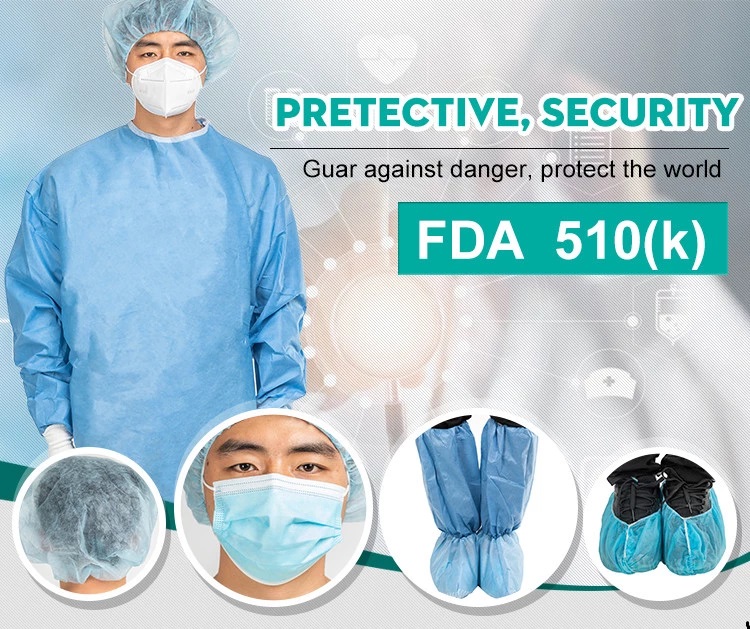Boot covers serve as crucial protective gear, ensuring cleanliness and preventing contamination in various industries. This article explores the significance of boot covers, highlighting their role in maintaining clean environments and preventing the spread of contaminants. Discover the different types of boot covers available and the best practices associated with their usage. By understanding the importance of protective footwear and adopting proper hygiene practices, professionals across industries can contribute to safety protocols and ensure the maintenance of contamination-free environments. Read on to enhance your knowledge of why boot covers are essential in the medical industry and beyond.

BOOT COVERS
Polypropylene non-woven
Features:
• made of polypropylene non-woven 30 g/m², 35 g/m² or 40 g/m²
• with elastic rubber band at the opening
In industries where cleanliness and hygiene are of utmost importance,  boot covers play a critical role in maintaining contamination-free environments. These protective footwear solutions are designed to prevent the spread of contaminants and help uphold stringent safety protocols. From healthcare settings to laboratories and clean rooms, boot covers are indispensable in various industries.
boot covers play a critical role in maintaining contamination-free environments. These protective footwear solutions are designed to prevent the spread of contaminants and help uphold stringent safety protocols. From healthcare settings to laboratories and clean rooms, boot covers are indispensable in various industries.
One of the primary functions of boot covers is to prevent the transfer of potentially harmful substances from footwear to the surrounding environment. In medical settings, where sterile conditions are paramount, boot covers act as a crucial barrier between the footwear and the sterile area, minimizing the risk of contamination. Similarly, in laboratory or clean room environments, boot covers prevent the introduction of foreign particles that could compromise experiments or sensitive processes.
Boot covers are available in different materials, such as non-woven fabric, plastic, or polyethylene, each offering specific benefits depending on the industry and requirements. Disposable boot covers are a popular choice due to ease of use and elimination of cross-contamination risks, while reusable options provide durability and cost-effectiveness over the long term.
To maximize the effectiveness of boot covers, proper usage and adherence to hygiene practices are essential. Professionals must ensure that boot covers are worn before entering clean or sterile areas, and they should be securely fastened to prevent slippage or accidental removal. Regular checks and replacement of damaged or soiled boot covers are crucial to maintain the integrity of the protective barrier.
In conclusion, boot covers play a significant role in maintaining clean and contamination-free environments in various industries. Their usage is particularly crucial in healthcare settings, laboratories, and clean rooms. By understanding the importance of boot covers and practicing proper hygiene protocols, professionals can contribute to upholding safety standards and preventing the spread of contaminants. Incorporating boot covers as part of safety protocols ensures a clean and sterile environment, promoting the overall success of operations in diverse industries.
Contact: Neo
Phone: 008615867460640
E-mail: Info@Hwtai.com
Whatsapp:008615867460640
Add: Building 2, Xinmao Qilu Science Technology Industrial Park, Tianqiao District, Jinan City, Shandong Province,China.
We chat
